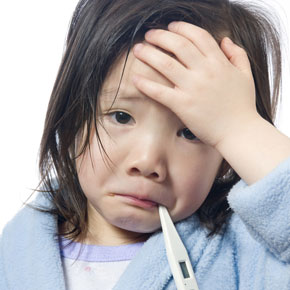 My vision with this series of posts is to explore some of the strategies parents can utilise to help tackle health issues such as allergies, ear infections and behavioural-gut related issues.
My vision with this series of posts is to explore some of the strategies parents can utilise to help tackle health issues such as allergies, ear infections and behavioural-gut related issues.
Before I am able to share some of the proactive solutions we can take to approach these health challenges I believe we need to look at the process involved in the decline of the function of our body in order to better understand how to rebuild our health and the health of our children.
In the last post I shared with you a graphic that took a brief look at which factors may contribute to a weakening of the important connection between the gut, the brain and immune system. Please take a quick look here at all of the lifestyle factors that may contribute to children and adults experiencing allergies, asthma and other health issues.
. . . . .
To understand the impact those driving lifestyle factors have on these systems we need to:
- Firstly see how these systems are innately designed to evolve and mature
- Secondly how they can cease to work properly when damaged
- Demonstrate the impact of this by comparing allergic and nonallergic children and how gut and immune malfunctions impact our health.
The Innate Design
When an unborn baby is growing in the womb it is protected from viruses and foreign particles because the mothers immune system is working in a HEIGHTENED state.
Her immune system is fired up, ready to take instant, alarmist, “superhero” action should the need arise to protect her unborn baby. This is known as a Th2 immune state.
After Birth
After birth through exposure to the environment, through daily life and being amongst bugs, germs and allergens — a baby’s immune system is then designed to develop and initiate a SWITCH from solely creating Th2 immune responses to a balanced set-point between Th1 and Th2 immune responses.
Why the Switch?
Th1 immune responses are more practical then the ‘alarmist’ Th2 and this balance between the two types is fundamentally important to the development of the immune system. Each type of immune response keeps the other in check — i.e. Th1 activity helps to control Th2 activity and Th2 activity helps to control Th1.1
There’s a lot more to it than this but in essence this cross-regulation allows our immune system to strengthen and develop and take ‘mild’ or ‘assertive’ action based upon need.
Why is this important?
Before your eyes glaze over and I lose you, let me explain why this is important and what happens if there isn’t a balance between Th1 and Th2 immune responses…
If there isn’t this balance between the two then we develop a compromised immune system which can become deeply upset and out of control, which in time may begin to scavenge on our own body.2
Out Of Control
Our immune system can be thought of like an army. When our immune system is functioning well it operates like a powerful, well-regulated army. When it is not functioning well it acts like an out-of-control army causing allergies, inflammation and other health challenges.
Think of the Th1 and Th2 response we talked about like two major armies. Th1 immunity are like soldiers that sit on the outside of cells and create an immune response via the cells of the body. While Th2 immunity are found more within the liquids of the body and create widespread immune responses this way. Again it is more complicated than this, but for simplicity sake let’s leave it there.
Good bacteria in our gut create the largest part of our immune system and can be described as the right hand of the immune system. Aside from helping to digest food this friendly bacteria provide protection against bugs and help to remove harmful substances (toxins) – e.g. pesticides and heavy metals.3
When there is a decrease in beneficial gut bacteria then their are fewer soldiers and these soldiers become relaxed and lazy; which leaves the gut poorly protected from antigens (a toxin or other foreign substance which induces an immune response in the body).
A decline in bacteria means that the gut wall is not very well protected from these antigens and big gaps occur and the gut wall becomes damaged and leaky. A constant stream of invaders and undigested foods are then able to pass through the damaged epithelial barriers in the gut. The immune system then becomes alarmed and stressed.
Unfriendly bacteria in the human gut also make their own toxins that can damage the gut wall allowing these toxins to also pass through the gut wall and enter the blood stream where they can then travel to the brain and cause inflammation and block metabolic pathways.
There is a growing body of research which outlines that if the immune system is skewed by a bacterial imbalance then we see skewed immune responses. The imbalance between Th1 and Th2 immunity appears to be the basis of so many health challenges children and adults face today. Yet when we have a balance of friendly and unfriendly bacteria then we experience digestive power, immune strength, balance of the gut-brain axis, robust health and vitality.4
The Canadian Medical Association Journal just a few months ago5 stated that “the disruption of the gut balance has been linked to an increasing number of diseases, including inflammatory bowel disease, diabetes, obesity, cancer, allergies and asthma.”
Bringing It All Together:
Comparing Allergic &Amp; Nonallergic Children
At this point there are few common findings that differentiate allergic children from nonallergic children. More research is definitely needed but here are some of the findings to date based upon what we’ve discussed.6
Child With Allergies |
Child Without Allergies |
| STAY in the Th2 HEIGHTEN immune state and become overly sensitive and reactive to most things. | After birth, a BALANCE develops between Th1 and Th2 immune responses based on need. The immune system can then regulate itself properly. |
| Have a much lower quantity of friendly, beneficial bacteria due to events in pregnancy, birth and post birth. Please review our graphic on driving factors. | Lots of friendly, beneficial bacteria |
| FEWER strains of different types of bacteria. | Great diversity in the types of bacteria that are present, which creates an impenetrable gut wall, strong digestive system and immune system. |
| Have MORE harmful, unfriendly bacteria. | Fewer strains of harmful pathogenic bacteria. |
| Typically develop Dysbiosis which is where there is a breakdown in the balance between protective versus harmful intestinal bacteria. | Have a positive balance between friendly and pathogenic bacteria working in a symbiotic relationship. |
| Damaged leaky gut, poor digestion, absorption, detoxification and a heighten immune system | A strong digestive system and robust immune system |
Please note: If your child has allergies or digestive issues, don’t feel alarmed or daunted — there are numerous books, programs and an enormous amount of helpful information available to you via the internet to help tackle these problems. Additionally, in this series of posts we are going to look at some proactive and beneficial steps parents can take to restore the gut-brain and immune connection.
The body is always wanting to recreate balance. Sometimes it just requires commitment and a whole lot of stamina. The results, however, are well worth the effort.
. . . . .
Yours in health…
Jennifer Barham-Floreani
Bach. Chiropractic, Bach. App Clinical Science
Registered internationally, no longer practicing as a chiropractor in Australia.
. . . . .
2/3 — Berick P. The microbiota-gut-brain axis: Learning from Intestinal Bacteria? Gut. 2011 Mar, 60(3):288-9 Lancet. 2003 Feb 8;361(9356):512-9.Gut flora in health and disease. Guarner F, Malagelada JR. EA Grice et al. Topographical and Temporal Diversity of the Human Skin Microbiome. Science 29 May 2009: Vol. 324 no. 5931 pp. 1190-1192
4 — Collins SM, Surette M et al.The interplay between the intestinal microbiota and the brain. Nature Reviews Microbiology 10, 735-742 (November 2012)
5 — Azad MB, Konya T, Maughan H, Guttman DS, Field CJ, Chari RS, Sears MR, Becker AB, Scott JA, Kozyrskyj AL, on behalf of the CHILD Study Investigators. Gut microbiota of healthy Canadian infants: profiles by mode of delivery and infant diet at 4 months CMAJ 2013. DOI:10.1503/cmaj.121189
6 — Graammatikos AP The genetic and environmental basis of atopic disease. Ann Med. 2008;40(7): 482-95
Kemp AS. Epipen epidemic:suggestions for rational prescribing in childhood food allergy. J Pediatr Child helath. 2003 Jul;39(5):372-4
M. Tulic, et al., ‘Differences in the developmental trajectory of innate microbial responses’.Journal of Allergy and CLinical Immunology, 2011, no.127, no.2, pp.:470-8
E. Sepp, et al., ‘Intestinal microflora of Estonian and Swedish infants’. Acta Paediatrica, 1997, no86,pp 956-61
B. Björkstén, et al., ‘Allergy development and the intestinal microflora during the first year of life’ Journal of Allergy and Clinical Immunology, 2001, no 108, pp 516-20
N. I. Kjellman, ‘Prediction and prevention of atopic allergy’; R. S. Zeiger, et al., ‘Genetic and environmental factors affecting the developing of atopy through age 4 in children with atopic parents: a prospective randomised study of food allergen avoidance’.
S. Prescott, ‘Development of allergen-specific T-cell memory in atopic and normal children’.Lancet, 1999, vol.353,no.9148,pp.196-200



